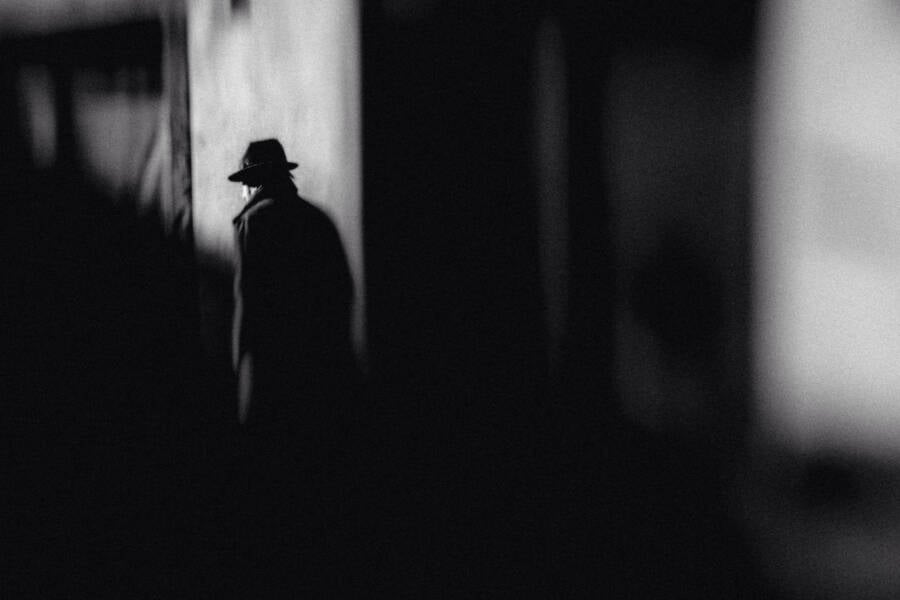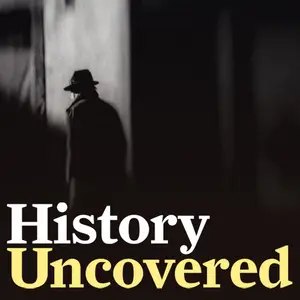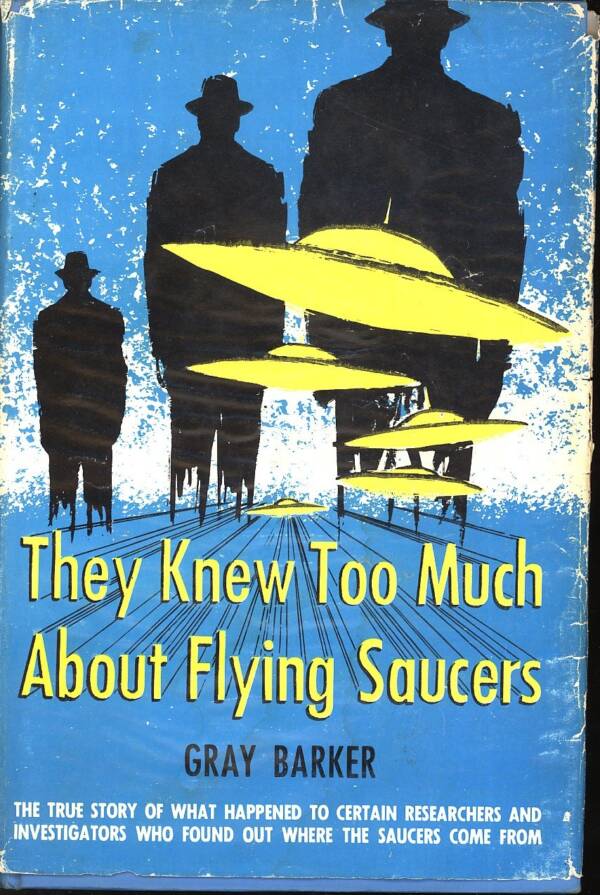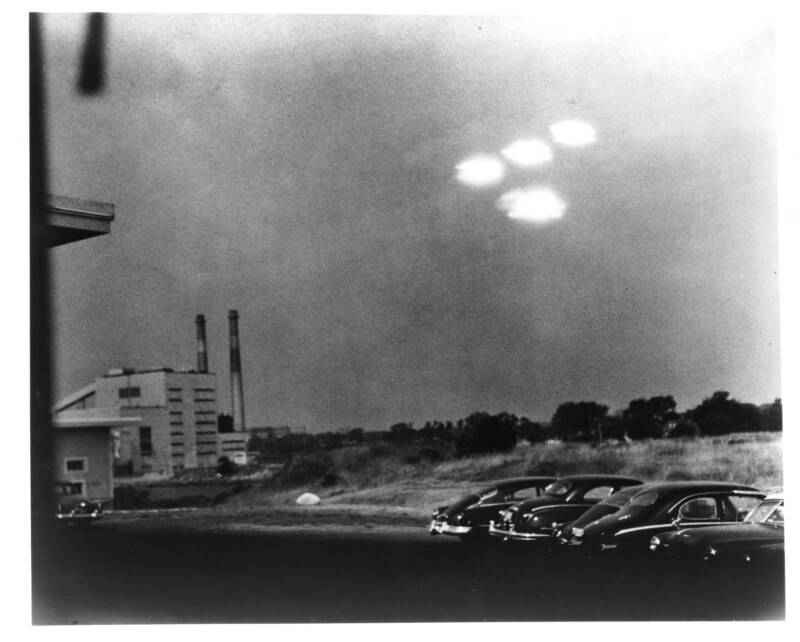Unlike their Hollywood counterparts, the real-life Men in Black are mysterious figures who threaten people who have reported paranormal experiences.

EyeEm/Getty ImagesThe real-life Men in Black are characterized by their unremarkably ordinary faces, pale skin, and dark suits.
In 1997, Men in Black hit theaters. A science-fiction comedy based on a Marvel comic series and starring Will Smith and Tommy Lee Jones, the film tells the story of an NYPD officer who unwittingly chases down a disguised alien and is recruited to join a top-secret organization, the Men in Black, with the goal of keeping the public unaware of alien refugees on Earth.
The movie was a hit, sequels were made, and most people likely went on with their lives not thinking much more about it. But for a select group of conspiracy theorists and ufologists, the Men in Black were more than just a Hollywood fabrication. In fact, stories of the Men in Black had been circulating for half a century before the film was released.
The “real” Men in Black are said to be shadowy, secretive figures dressed in dark suits who visit witnesses of strange, paranormal phenomena — typically, those who have claimed to see UFOs.
MIBs usually appear in groups of two or three, allegedly threatening witnesses to ensure they remain silent about what they’ve seen. Some have claimed the MIBs are government agents, but others believe they may in fact be shapeshifting aliens in disguise.

In either case, those who claim to have had experiences with the real Men in Black are not quick to forget them.
Harold Dahl And The Maury Island Incident
In 1956, Gray Barker released the book They Knew Too Much About Flying Saucers, in which he compiled a series of accounts from people who claimed to have had encounters with aliens before being visited by strange men in dark suits.

University BooksThe cover of author Gray Barker’s They Knew Too Much About Flying Saucers, which detailed the real Men in Black in the late 1950s.
From Barker’s account, the first mention of Men in Black can be traced back to June 27, 1947 and a man named Harold Dahl in what came to be known as the Maury Island UFO Incident.
According to Dahl’s account, Dahl was on a conservation mission, gathering logs with his son Charles near the eastern shore of Maury Island, Washington in Puget Sound. As he was working, Dahl claimed, he saw six donut-shaped objects hovering in the air, roughly half a mile above his boat. Before he could make sense of what he was seeing, one of the objects fell from the sky, dropping a barrage of metallic debris.
Some of the debris struck Charles, and Dahl snapped several photographs of the flying objects. When the men were back on land, Dahl showed the photographs to his supervisor, Fred Crisman. Crisman was skeptical. But when he went to investigate the scene for himself, he allegedly saw one of the strange flying objects hovering before him.

Wikimedia CommonsAn artist’s rendition of the Maury Island UFO Incident.
The next morning, Dahl claimed he was visited by a man in a black suit who was able to describe Dahl’s experience in eerily accurate detail. The man then said to him, “What I have said is proof to you that I know a great deal more about this experience of yours than you will want to believe.”
Before leaving, the man warned Dahl that bad things would happen to him if he should ever speak of the incident.
Although both Dahl and Crisman later said the incident was a hoax, it did little to stop conspiracy theorists and ufologists from looking into it.
Admittedly, the Maury Island Incident gained little notice until Barker’s book was published — but it was the way in which Barker connected Dahl’s story to that of a young man named Albert K. Bender that truly kicked off the Men in Black fascination.
Albert Bender And The International Flying Saucer Bureau
In 1952, Albert Bender created an organization known as the International Flying Saucer Bureau, a short-lived project mostly known for the magazine it published, Space Review. In a 1953 edition of Space Review, Bender claimed he had been visited by “three men wearing dark suits,” according to Live Science. These men, he said, told him to cease publishing information about UFOs.
That same year, Space Review stopped publishing altogether, and the International Flying Saucer Bureau ceased to be. Many assumed Bender had been planning to stop publishing anyway, due to his magazine making little money.
Still, Bender’s story caught the attention of Gray Barker, and it became yet another account in They Knew Too Much About Flying Saucers to feature the Men in Black.

Ray Massey/Getty ImagesThe 1940s and 1950s were a time of great technological advancement in the United States, which many folklorists and historians believe may have influenced the fear of — and fascination with — UFOs.
In his book, Barker recounted Bender’s experience, describing the Men in Black as “Three men in black suits with threatening expressions on their faces. Three men who walk in on you and make certain demands. Three men who know that you know what the saucers really are!”
Gray Barker’s Book Helps Spread The Men In Black Story
Those who believed in UFO conspiracies often looked to the Men in Black as some kind of proof that these phenomena were true — if a witness was threatened, that made them more believable, the logic went. After all, why would someone try to silence something if it weren’t true?
By this point, UFOs had evolved from a fringe tabloid section of the paper to the front page. These were the years following the infamous Roswell, New Mexico UFO incident, and Barker’s book served less as a conspiratorial manifesto and more as a collection of a new sort of folklore.
This understanding of UFO phenomena and the Men in Black as folklore or cultural mythology was furthered by a 1957 report from famed psychoanalyst Carl Jung, “Flying Saucers: A Modern Myth of Things Seen in the Skies.”
While Jung never argued for or against the existence of UFOs, he noted, “Our time is characterized by fragmentation, confusion, and perplexity… At such times men’s eyes turn to heaven for help, and marvelous signs appear from on high.”

John Springer Collection/CORBIS/Corbis via Getty ImagesThe alien Gort standing by his spacecraft in 1951’s The Day the Earth Stood Still.
In fact in the encyclopedia UFOs and Popular Culture, folklorist James Lewis wrote of Barker: “Barker considered himself an entertainer and folklorist rather than a factual reporter and was a gifted writer with a gentle, understated sense of humor.”
As time went on, the mythology of UFOs continued to evolve. More and more people came forward claiming to have seen aliens or mysterious objects in the sky, and many of these incidents have become the focus of fascination in their own right.
UFO And Men In Black Mythology Has Evolved ‘Like A Game Of Telephone’

Shell R. Alpert/Library of Congress/Corbis/VCG via Getty ImagesFour glowing, unidentified objects that allegedly appeared in the sky at 9:35 a.m. on July 15, 1952, over a parking lot in Salem, Massachusetts.
UFO stories evolved culturally as well, as more films, television shows, novels, comics, and eventually video games took UFOs and extraterrestrial life to greater heights.
In 1962, Albert Bender released his own book specifically about the Men in Black, Flying Saucers and the Three Men. Bender’s own words painted an even more sinister image of the Men in Black:
“They floated about a foot off the floor… They looked like clergymen, but wore hats similar to Homburg style. The faces were not clearly discernible, for the hats partly hid and shaded them… The eyes of all three figures suddenly lit up like flashlight bulbs… They seemed to burn into my very soul as the pains above my eyes became almost unbearable.”
Like so much else in the conversation regarding UFOs, the Men in Black changed over time. No longer were they simply government agents offering a warning — they were mysterious entities unto themselves, seemingly human and inhuman at the same time.
“The transformation of the story from a first press report to a folkloric tale to a comic book and now to a film illustrates how the myth is transformed,” Phil Patton wrote for the New York Times in 1997, around the time Men in Black hit theaters. “That process is not unlike the children’s game of telephone or what the literary critic Harold Bloom calls innovation by misinterpretation. The period when the saucer phenomenon was new is now a point of reference.”
In the quarter-century since Men in Black released, it too has become a point of reference. Stories of the real Men in Black don’t circulate as often now as they did in the mid-20th century — partly because the mere concept has been turned into something of a joke.
Still, in the midst of the UFO cultural zeitgeist, the Men in Black were for a time a key part of the conversation, and claiming to encounter them was tantamount to proving that you really had seen aliens.
For more UFO sightings, read about the 1994 Lake Michigan UFO Incident or the leaked Pentagon reports detailing silver cube-shaped craft spotted in the air.





